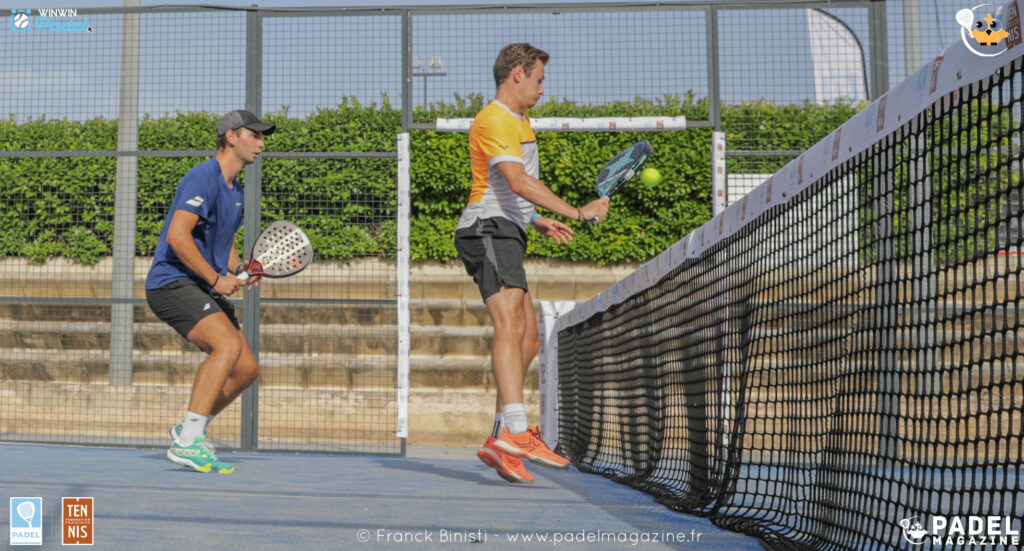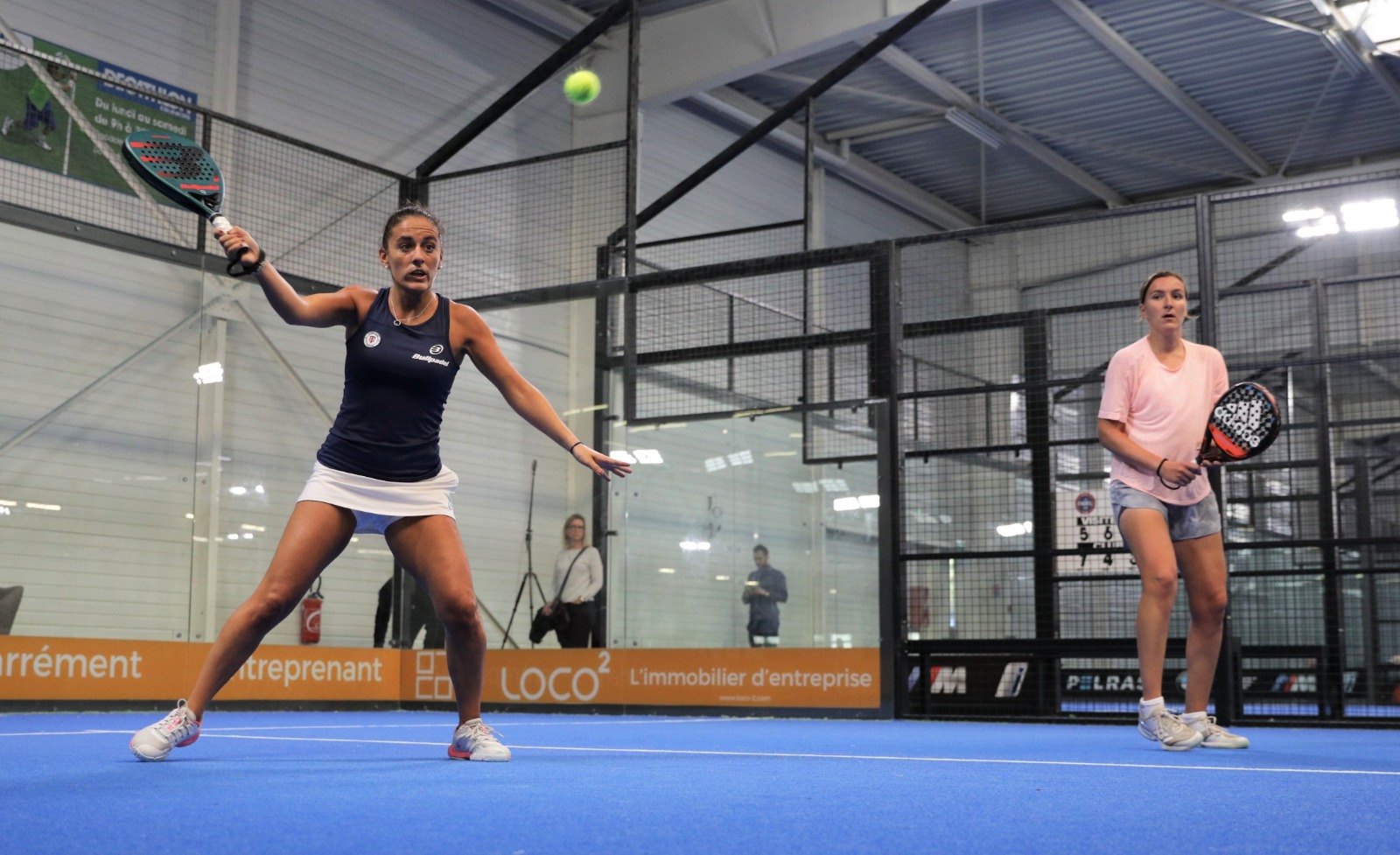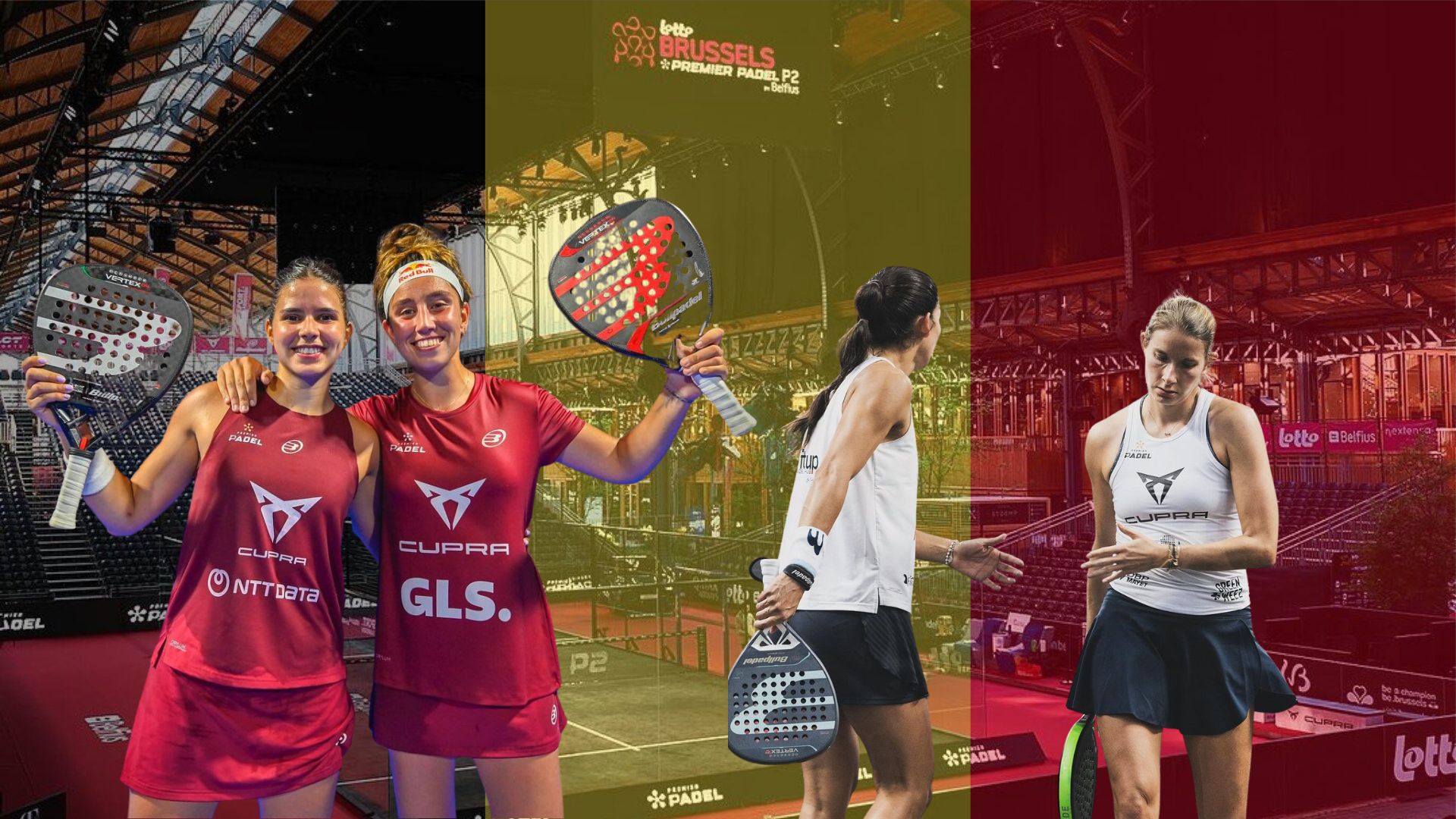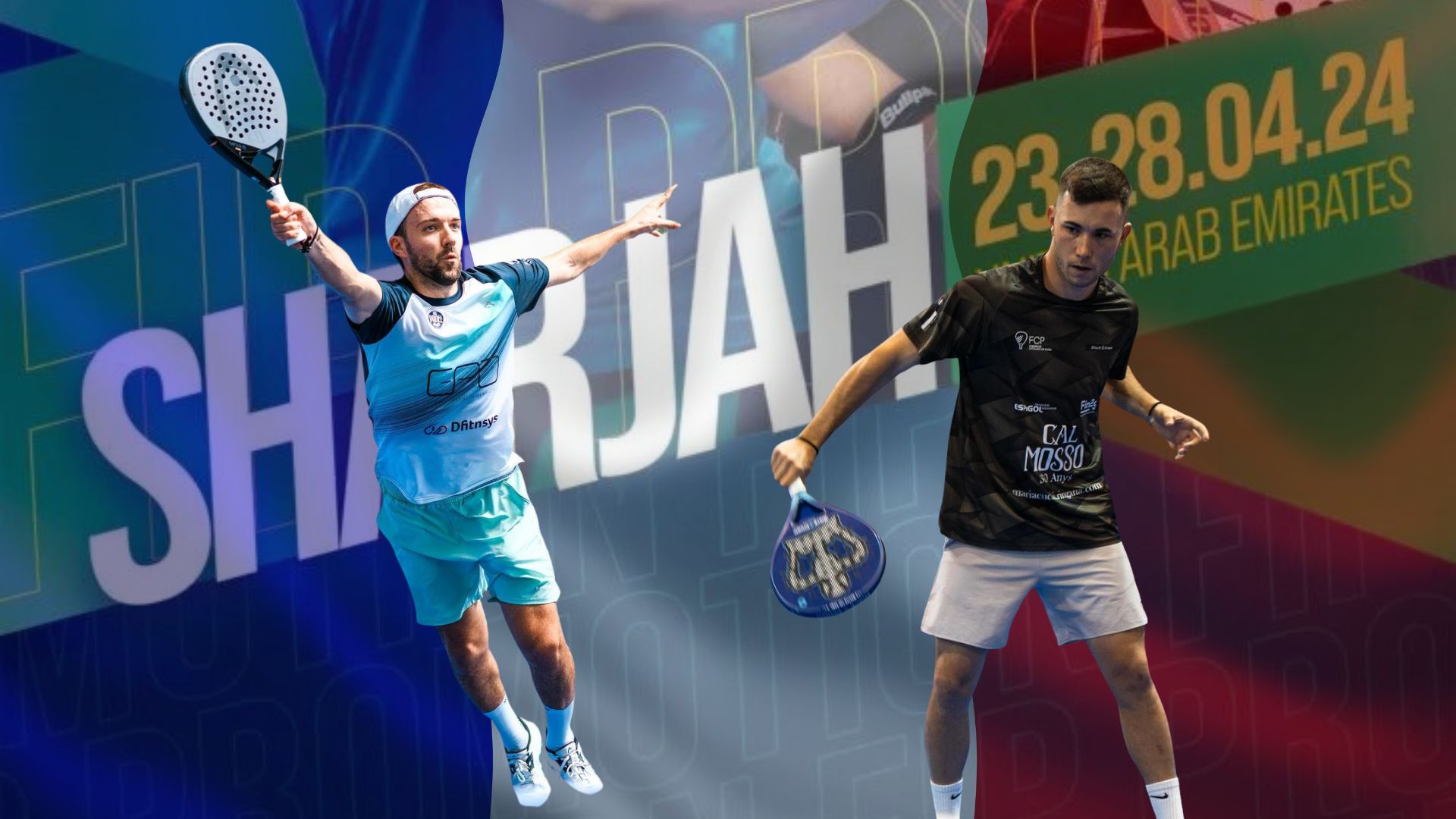Are you tired of spending time to the defense ? So let's move on to the attack. You are to the net and have to play stolen. Are they all to be negotiated in the same way?
That's the situation. You are placed on the fly and your opponents make you “work”. We are not going to talk about how to play and impact these volleys but rather trying to understand how to position yourself following a strike.
As you will understand, there are many scenarios but today we will try to separate these volleys into three types: the holding volley, the short volley and the deep volley.
The holding volley
In this case, you will not have the cards in hand.
Opponents overtake you and stare at you. You cannot move forward or backward and therefore your objective will be to put the ball back in the field while waiting for the next shot. Here, you cannot anticipate the next blow because you are no longer attacking but are being attacked. Hold the ball and think that with any luck the next shot will get you back on the offensive.
The Deep Volley
You know it, at padel, if the opponents are forced to defend when exiting the low window, they are normally more hampered than if they have to defend directly. So you make a deep volley, which can be fast or slow, it doesn't matter, but which will force you to play low out of the window.
Here your stance will change to get closer to the net for the next shot. We're only talking about one shot, not two. The fact that your volley is deep can allow you to be very aggressive with the next shot. So we can see some players being very glued to the net to try to get the ball out by 4. It's possible, because their volley, or that of their partner, was very deep, very low and very “pressed”, aggressive.

But since this won't always be the case and we need practice to detect these moments, work on this situation: play deep at the glass and get closer to the net to play the next shot. And if the point is not finished, take your place.
What happens in the event of a lob? Since the defender is not in a comfortable position, his lob will often be high or poorly balanced, which will allow you to hit the ball without too much difficulty. And really in the case of a perfect lob, your partner, who logically will not have come to stick, will be able to defend.
The short end
Nobody is perfect. You are at the net and unfortunately your volley is short. We are not talking about amortization or a deliberate volley at the grid, we are talking about the one that allows opponents to play while advancing. What to do ? Staying in your position would make you suffer, going towards the net would be either suicidal or an invitation to lob, so the most interesting thing would be to take one or two steps back to allow you to anticipate and avoid the breakage.
Let's imagine that we are a right player. I play a short volley which allows the opponent in my diagonal to play a backhand (he is right-handed). What options does he have? Playing aggressive directly to my body. Play fast in the middle. Play the lob. More difficult, play slow towards the grid. With my basic position I can only negotiate one ball correctly, the most difficult for him, the grid. So if I change my stance a little further back, I can control the aggressive ball better on my body because I'll have more time to see it coming.
If he plays a fast ball in the center, I will let it pass to play it out of the window. Certainly I will initially lose the net, but I will expose myself less than if I had touched it while being close to the net, opening the court on the forehand side. For the lob, I will already be in a position that will allow me to better negotiate the bandeja. And finally, for the slow pitch to the grid, I can let it bounce and play it while advancing to retake the net.
It was for my opponent's backhand. Now let's see what happens if he plays forehand. By keeping my position at the net, he can play the lob, look along the line, play cross court to the grid or try to pass in the middle.
In this panel of moves, in your opinion, which ones are most likely to be played? Answer: first the lob, then the short cross to the grid.
So by placing ourselves slightly behind we will correctly negotiate the bandeja, we will be able to play the ball short cross after rebound on the grid, unlike a more advanced position which would ask us to play it in low volley, then we will close the angles for a ball played in the center or for all other shots.
See how, after learning how to volley padel, your position at the net must change to adapt to the situation, finish the point or, on the contrary, reorganize your attack.
In conclusion: if I hurt my opponents, I can move forward but if, on the contrary, I suffer their attacks, I have to place myself in such a way as to slow down this progress. Let's go!
Julien Bondia is a teacher of padel in Tenerife (Spain). Columnist and advisor, he helps you play better through his tutorials and tactical/technical articles padel.





































































































 4 Fiberglass Padel Courts for The Ville de Paris: a choice that looks to the future
4 Fiberglass Padel Courts for The Ville de Paris: a choice that looks to the future Olympic Games: Club France will have its 4 tracks padel !
Olympic Games: Club France will have its 4 tracks padel ! Brussels Premier Padel Brussels P2 – Collombon / Bidahorria falls against Brea / Gonzalez
Brussels Premier Padel Brussels P2 – Collombon / Bidahorria falls against Brea / Gonzalez FIP Promotion Sharjah – De Meyer / Figuerola in the second round
FIP Promotion Sharjah – De Meyer / Figuerola in the second round Guillaume Codron de Sud Padel : “A family project”
Guillaume Codron de Sud Padel : “A family project” Nallé Grinda: “Democratize the padel in the USA with PadelX "
Nallé Grinda: “Democratize the padel in the USA with PadelX " Simon Boissé: “We know that there are two nations in front of us”
Simon Boissé: “We know that there are two nations in front of us” Marie Maligo: “This period of frequent changes of partners was beneficial for me”
Marie Maligo: “This period of frequent changes of partners was beneficial for me” Gilles Moretton: “We will be able to put the padel at the level of tennis”
Gilles Moretton: “We will be able to put the padel at the level of tennis” Two P1000 doubled prize money approaching!
Two P1000 doubled prize money approaching! José Manuel Escin at the inauguration of Casa Padel DOS: “Finally, and thank you!”
José Manuel Escin at the inauguration of Casa Padel DOS: “Finally, and thank you!” The 2024 European Junior Championships in Budapest in September!
The 2024 European Junior Championships in Budapest in September! Padel Score comes to Tahiti for American Express Padel Cup!
Padel Score comes to Tahiti for American Express Padel Cup! Do you know the Rafa Nadal Academy Tour?
Do you know the Rafa Nadal Academy Tour? Play at padel on his yacht? Possible for €233.000!
Play at padel on his yacht? Possible for €233.000! Our Top 10 training courses padel in France and Europe
Our Top 10 training courses padel in France and Europe At the heart of padel – Episode 25: Paul and Andoni answer your questions
At the heart of padel – Episode 25: Paul and Andoni answer your questions Tactical padel – What to do when faced with players who systematically stay at the bottom?
Tactical padel – What to do when faced with players who systematically stay at the bottom? The basic tactics of padel
The basic tactics of padel At the heart of padel – Episode 25: Paul and Andoni answer your questions
At the heart of padel – Episode 25: Paul and Andoni answer your questions At the heart of padel – Episode 23: defend the window well
At the heart of padel – Episode 23: defend the window well Prohibition on playing topless Padel : the reasons
Prohibition on playing topless Padel : the reasons FIP Tour – Going far from Europe, THE strategy to earn points!
FIP Tour – Going far from Europe, THE strategy to earn points! What is a good football player? padel ?
What is a good football player? padel ? “Lefties give me headaches when I play against them!”
“Lefties give me headaches when I play against them!” At the heart of padel – Episode 14: how to earn points in winter?
At the heart of padel – Episode 14: how to earn points in winter? A par 4 is always a winner...even if you manage to defend it!
A par 4 is always a winner...even if you manage to defend it! Carbon fiber VS fiberglass: what to choose?
Carbon fiber VS fiberglass: what to choose? How to effectively test a racket padel ?
How to effectively test a racket padel ? La padel to fight Parkinson's disease
La padel to fight Parkinson's disease Don't play with a cracked or broken racket, your body will thank you!
Don't play with a cracked or broken racket, your body will thank you! Michel Cymes: “The padel, physically, it’s serious!”
Michel Cymes: “The padel, physically, it’s serious!” Jeremy Gala: “Promote the padel among young people in Belgium remains a challenge”
Jeremy Gala: “Promote the padel among young people in Belgium remains a challenge” The French Touch Academy organizes its selection day Padel-Study
The French Touch Academy organizes its selection day Padel-Study Report on the detection and training of younger generations
Report on the detection and training of younger generations